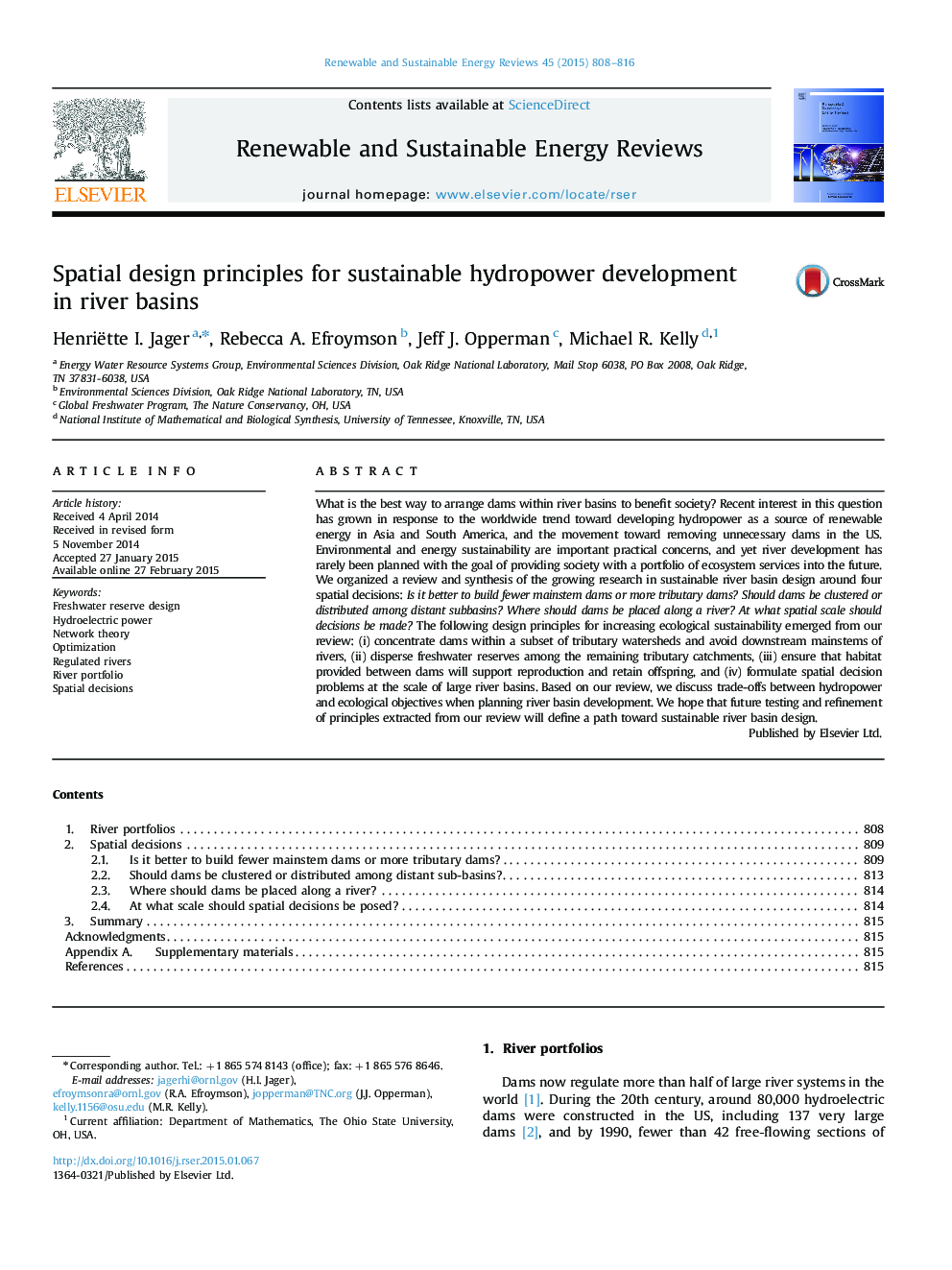| Article ID | Journal | Published Year | Pages | File Type |
|---|---|---|---|---|
| 1750085 | Renewable and Sustainable Energy Reviews | 2015 | 9 Pages |
What is the best way to arrange dams within river basins to benefit society? Recent interest in this question has grown in response to the worldwide trend toward developing hydropower as a source of renewable energy in Asia and South America, and the movement toward removing unnecessary dams in the US. Environmental and energy sustainability are important practical concerns, and yet river development has rarely been planned with the goal of providing society with a portfolio of ecosystem services into the future. We organized a review and synthesis of the growing research in sustainable river basin design around four spatial decisions: Is it better to build fewer mainstem dams or more tributary dams? Should dams be clustered or distributed among distant subbasins? Where should dams be placed along a river? At what spatial scale should decisions be made? The following design principles for increasing ecological sustainability emerged from our review: (i) concentrate dams within a subset of tributary watersheds and avoid downstream mainstems of rivers, (ii) disperse freshwater reserves among the remaining tributary catchments, (iii) ensure that habitat provided between dams will support reproduction and retain offspring, and (iv) formulate spatial decision problems at the scale of large river basins. Based on our review, we discuss trade-offs between hydropower and ecological objectives when planning river basin development. We hope that future testing and refinement of principles extracted from our review will define a path toward sustainable river basin design.
